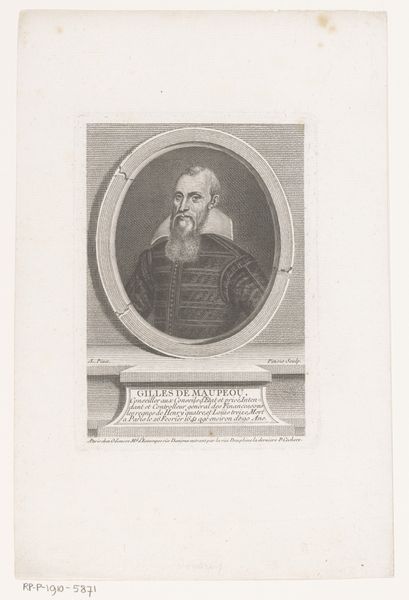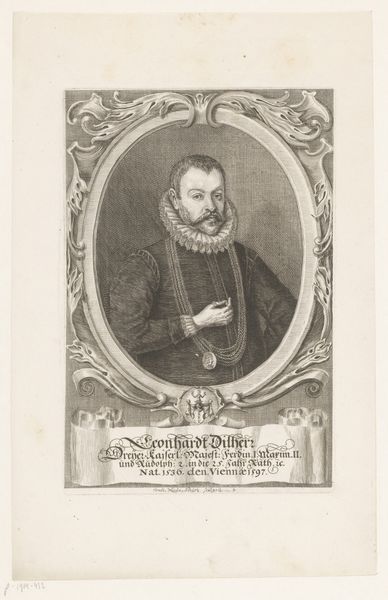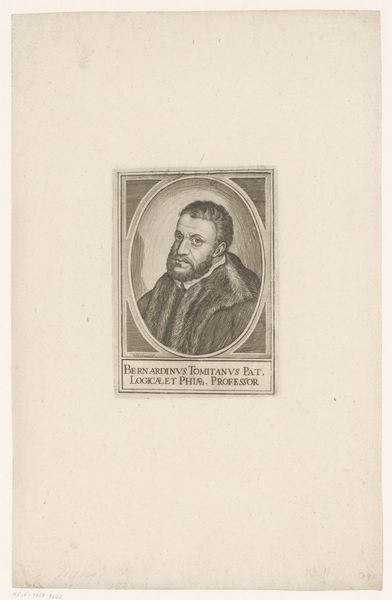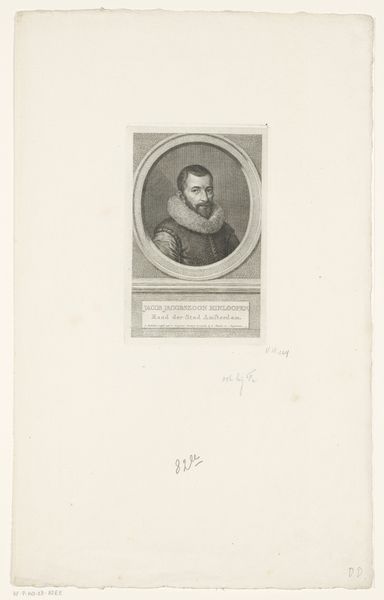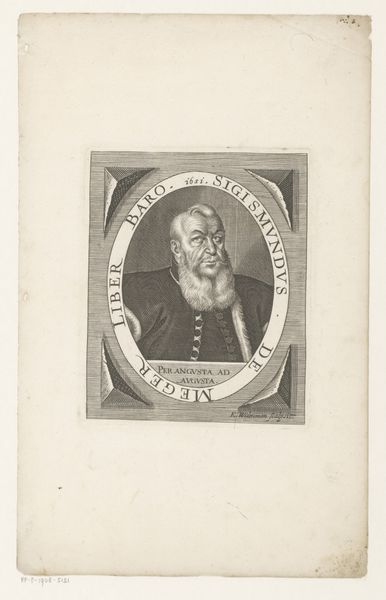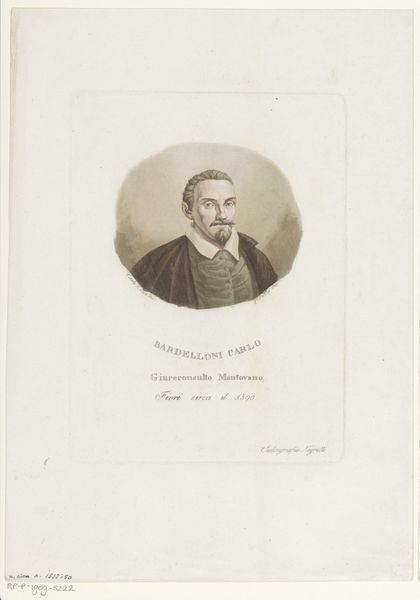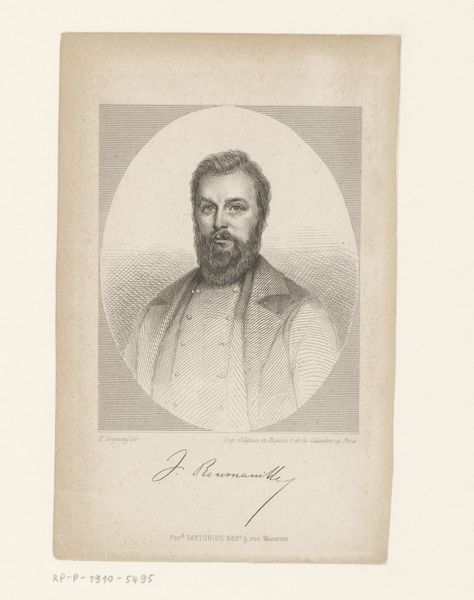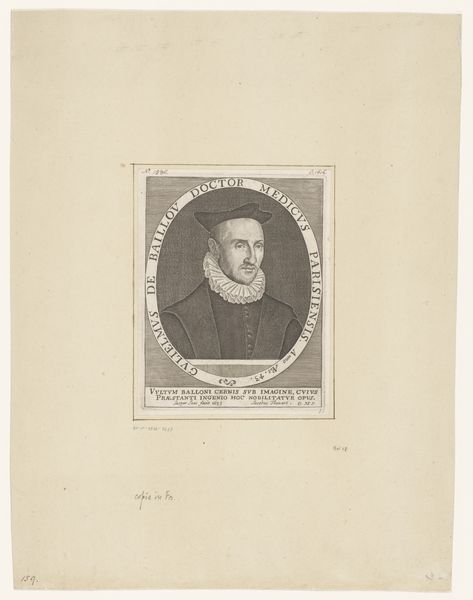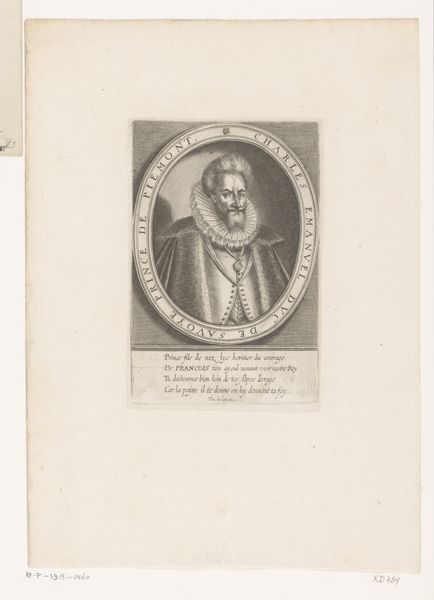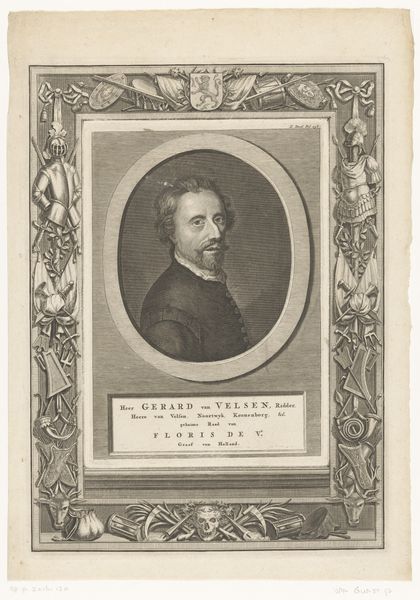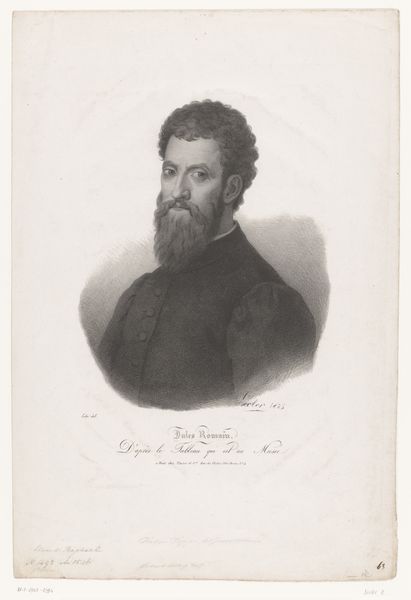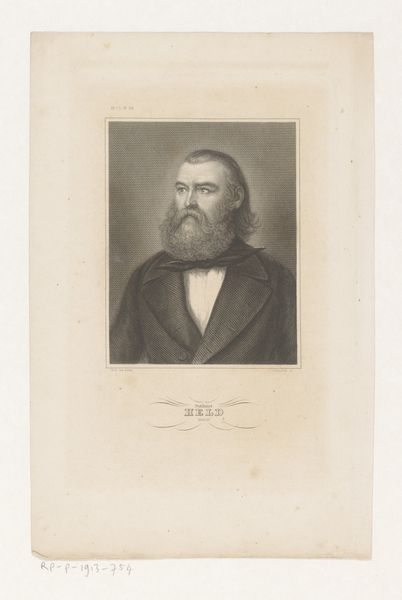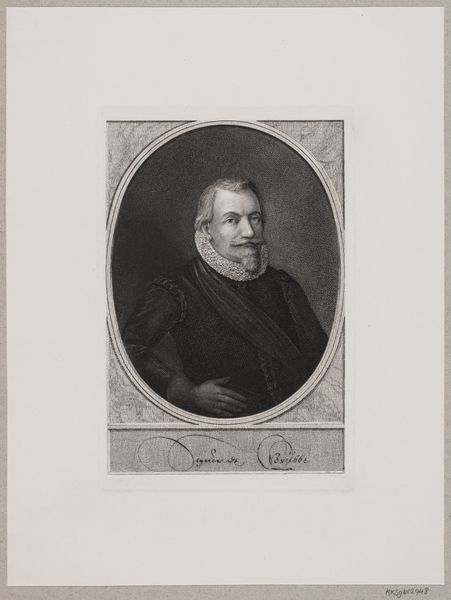
Dimensions: height 177 mm, width 120 mm
Copyright: Rijks Museum: Open Domain
Jacob Houbraken made this portrait of Egbert Roelofszoon using engraving, a printmaking technique, sometime before 1780. The image is made by carefully incising lines into a metal plate, likely copper, with a tool called a burin. Ink is then applied to the plate, filling the lines, and the surface is wiped clean. The paper is pressed against the plate, transferring the ink and creating the image. The result is a very fine level of detail and tonality, which you can see by looking closely at Roelofszoon's face and clothing. Engraving was a highly skilled and labor-intensive process. It required years of training to master the techniques of line-making, shading, and creating textures. In this period, printmaking was a key means of circulating images and information. The labor that goes into this process is part of the value it has. Looking at this portrait, it’s important to remember the amount of skill and work involved in its creation. It challenges us to think about craft, labor, and the economics of art production in the 18th century.
Comments
No comments
Be the first to comment and join the conversation on the ultimate creative platform.
